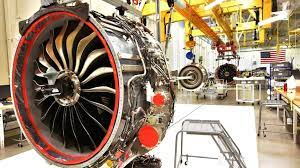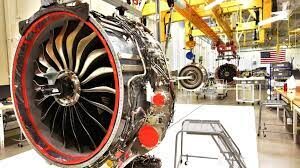Table of Contents
India’s Godrej Aerospace has announced its intention to manufacture modules of GE 414 engines, aiming to become part of the supply chain for the production of engines that will power India’s next-generation indigenous fighter jets. The deal, which was announced during Prime Minister Narendra Modi’s state visit to the U.S. last month, involves a joint effort between GE and Hindustan Aeronautics Limited (HAL) to manufacture the engines. While the specifics of the deal are still being finalized, Godrej Aerospace is planning to invest $30.26 million to establish a facility in Maharashtra for advanced manufacturing, assembly, and integration.
The Indian government, under Prime Minister Modi’s leadership, has been advocating for indigenous manufacturing and the sourcing of local components in the aerospace and defence sectors. Major international companies such as Airbus and Boeing have recently committed to increasing their local manufacturing and investment in India. This move towards indigenous manufacturing aligns with India’s broader strategy to boost its defence capabilities and reduce reliance on imports.

Logistics of a GE Engine
The first GE-F414 jet engine, jointly produced by GE and HAL, is expected to be rolled out in three years to power India’s indigenous Tejas Mark-2 fighters. This project marks a significant milestone in the bilateral defence-industrial collaboration between India and the United States, with 80% technology transfer involved. The Memorandum of Understanding (MoU) signed between GE Aerospace and HAL in Washington will soon be translated into an actual contract, pending the conclusion of commercial negotiations.
The cost of the production engines is yet to be determined but is expected to be “less than $1 billion” for 99 engines. However, the production of the engines must align with the timelines for manufacturing the 120-130 Tejas Mark-2 fighters. Currently, the Tejas Mark-2 is still in the design and development phase, following the approval by the Cabinet Committee on Security in August last year. The prototypes are being developed at a cost of over Rs 9,000 crore, and subsequent extensive flight-testing and certification processes will be required.
The Finance
The agreement to co-produce GE-F414 engines and India’s proposed $3.5 billion acquisition of 31 armed MQ-9B Predator or Reaper drones were the two major developments in the defence sector. These initiatives were driven by Defense Minister Rajnath Singh. The production of GE-F414 engines with 80% technology transfer is considered a significant achievement for India, as the previous offer in 2012 only included a 58% transfer of technology.
The Tejas Mark-2 jets, equipped with GE-F414 INS6 turbofan engines, will offer enhanced operational capabilities, longer combat range, and increased weapon-carrying capacity compared to the existing Tejas Mark-1 jets, which are powered by GE-F404 engines procured without technology transfer. The improved performance of the Tejas Mark-2 jets will contribute to India’s overall defence capabilities and strengthen its position in the regional security landscape.
In conclusion, India’s Godrej Aerospace aims to manufacture modules of GE 414 engines as part of the supply chain to produce engines for India’s next-generation fighter jets. The joint effort between GE and HAL is a significant step toward indigenous manufacturing and technology transfer in the aerospace and defence sectors. This move aligns with India’s broader strategy to enhance its defence capabilities and reduce reliance on imports. The production of GE-F414 engines and the acquisition of armed drones demonstrate India’s commitment to advancing its defence-industrial collaboration and strengthening its position in regional security.













